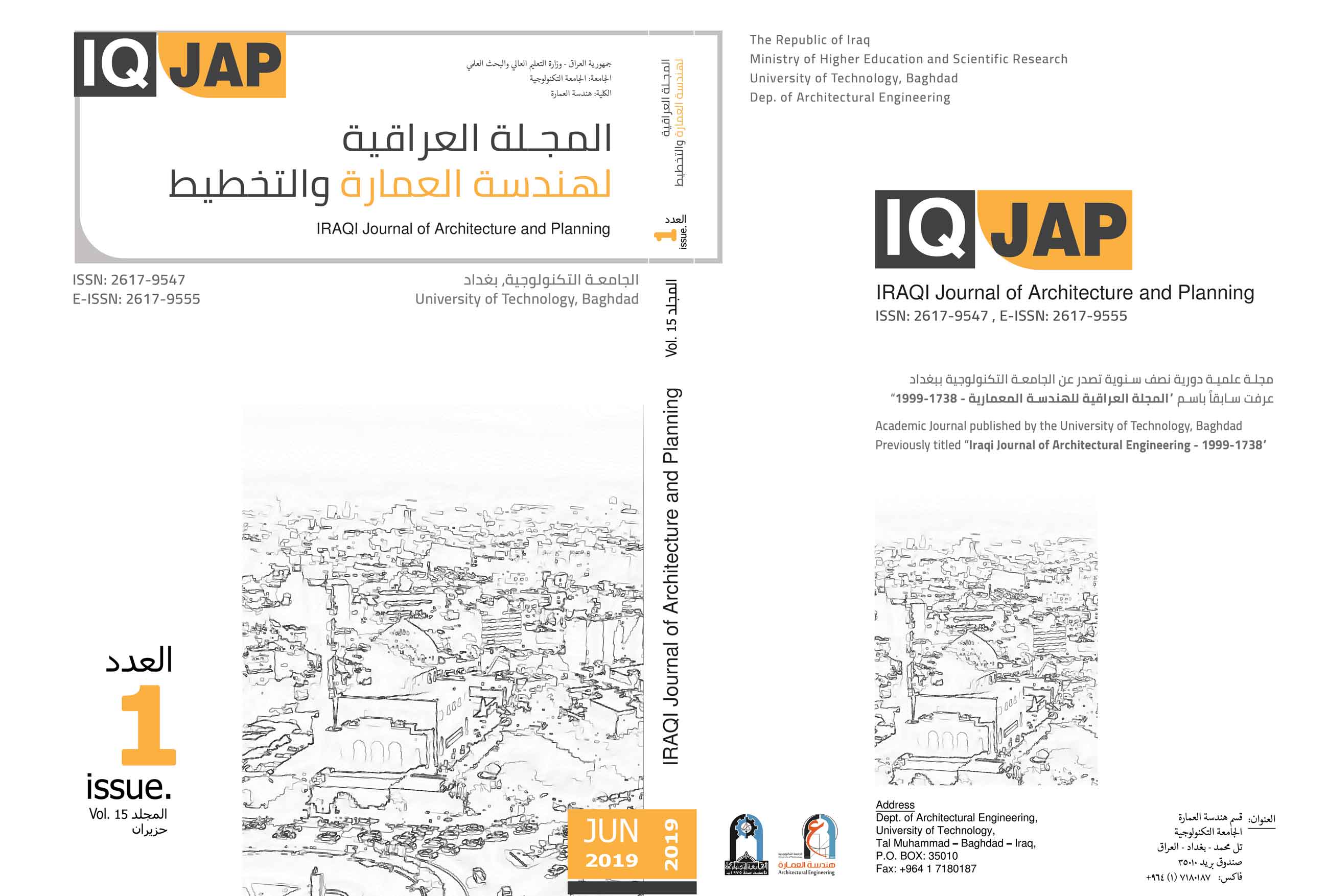Formal characteristics of portable emergency shelters
Formal characteristics of portable emergency shelters
Abstract
Wars and natural disasters have long been a threat to human life in many ways, including the destruction and loss of housing and other buildings, which made it necessary to develop rapid shelter plans to reduce the disaster. Plans to rebuild affected areas often take a long time, forcing those affected to take temporary solutions without regard to utility and durability. The shelters were designed in different types according to need. The previous knowledge dealt with a variety of species that could be categorized into simple and complex shelters. The first included shelters that could be carried by humans and the other carried by different means of transportation. The materials used in manufacturing, It has a portable shelter such as flexibility, the possibility of integration and rigging of the structure, adaptation, self-sufficiency and other characteristics. The research problem was focused on "the cognitive need to explore the formal characteristics of portable emergency shelters". The aim of the research is to identify the formal characteristics of the portable shelter that distinguish it from other types of portable architecture. It ensures the efficiency and durability of the shelter in performing its functions . This requires a three-stage approach. The first is to construct a theoretical framework on the morphological properties of the portable shelter and to explore the nature of the vocabulary and indicators of the formal characteristics of portable shelters. These include visual properties, dimension characteristics, description and analysis of two-dimensional surfaces, three-dimensional building block Design). The second is to examine these vocabulary within selected samples, and thirdly to discuss the results and conclusions that thus reinforce the theoretical framework of the vocabulary.
Downloads
References
Carlo Massarella, " Monster Moves, Adventures Moving The World Biggest Structures" , first fly Book, quercus, and u.s.a.2011.
Ching, Francis D.K, “Architecture Form, Space And Orderâ€, Van Nostrand Company,1979.P34.
Clark R.H. And Pause M. , “ Precedents In Architecture. ,Analytic Diagrams Formative Ideas And Partisâ€John Wiley & Sons. ,United States Of America,2005.
Dr. Maziar Asefi a, Faegeh Ahangar Sirus ,"10 Transformable Shelter: Evaluation and New Architectural Design Proposals", 2012.
Ernest Brian Abuin ,"Kinetic performance : a study in portable architecture" ,Florida International University ,2004. P28.63
Francis D. K. Ching, Architectural Graphics, , (3rd Edition) Publisher: John Wiley & Sons, 1996.
KRONENBURG, R. "Portable Architecture", 3erd edition , Eserier , architectural press, 2003.
Kronenburg, Robert," Flexible Architecture that Responds to Change" .London: Art Blume, 2007. Print.
Marieh Dialameh, "PORTABLE POST-DISASTER HOME" , 2017.
Maziar Asefi A, Faegeh Ahangar Sirus ,"10 Transformable Shelter: Evaluation And New Architectural Design Proposals", 2012,P1Marieh Dialameh , "Portable Post-Disaster Home Providing A Long-Term Temporary Solution For The Displaced People Affected Natural Disasters" 2017,P3,6
Mitchell, William, “The Logic Of Architectureâ€,The Mit Press, Cambridge Mass,1992.
Nusrat Jahan Mim ,"Adaptable Portable Modular Housing For Urban Poor", Dhaka, Bangladesh,2015,P1
Nusrat Jahan Mim ,"Adaptable Portable Modular housing for urban poor", Dhaka, Bangladesh,2015.
Schulz, C.N, “Intentions In Architectureâ€, The Mit Press, Cambridge ,1977
Shahnan,Ben,"the shape of content",harvard Univ.press,cambridge,5th ed.,1972.P.29
Reid, Herbert, Art Present, Samir Ali's translation, Freedom House for Printing, Baghdad, 1983, p. 89.
Copyright (c) 2019 Assmaa Muhammed Al-muqramm, Zaineb Saad Mahdi Mahdi

This work is licensed under a Creative Commons Attribution-ShareAlike 4.0 International License.
You are free to use the work, but you have to attribute (refer to) the work in the manner specified by the author or licensor (but not in any way that suggests that they endorse you or your use of the work).
IRAQI J. ARCHIT & PLANN grants you the right to publish the metadata of the journal, it's issues and articles under the terms of the Creative Commons Attribution-ShareAlike 4.0 International License.
Author(s) hold the copyright of their aricles without restrictions. However, IRAQI J. ARCHIT & PLANN holds publishing rights for articles and their revisions once the article is published.
Authors can archive pre-prints (ie pre-refereeing) and post-prints (i.e. final draft post-refereeing) versions of the work they submitted to IRAQI J. ARCHIT & PLANN using non-for-profit open-access servers whether on author's personal website and/or institutional repositories including the university or research center where the author work.. For post-prints, only the IRAQI J. ARCHIT & PLANN’s as-published PDF version is permitted and the published source (IRAQI J. ARCHIT & PLANN’s website) must be clearly acknowledged within the archiving webpage.






